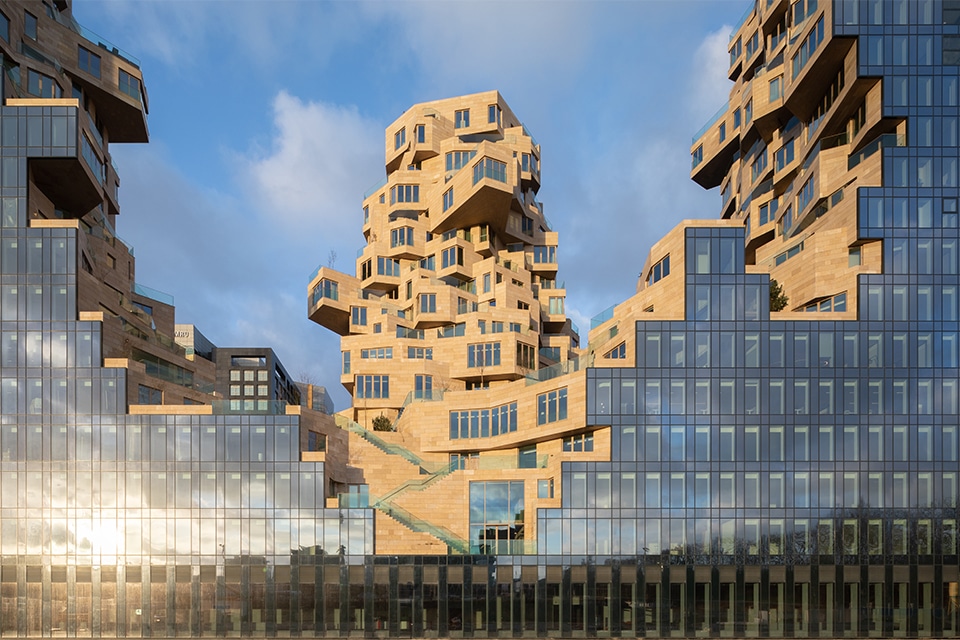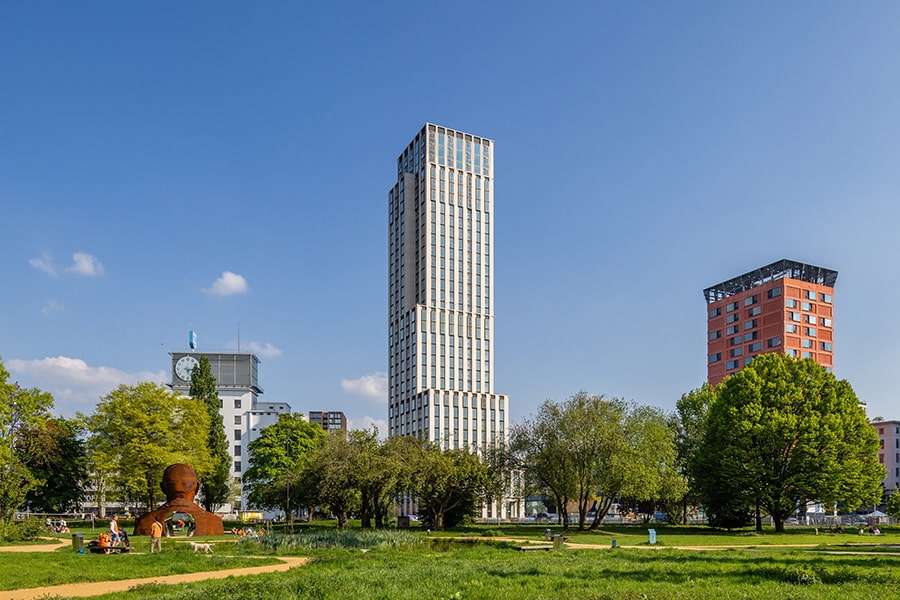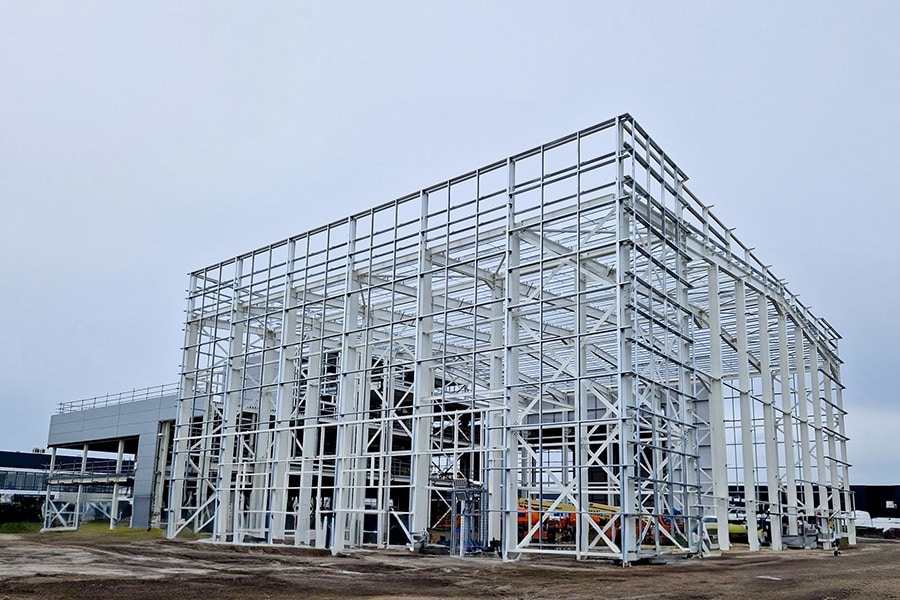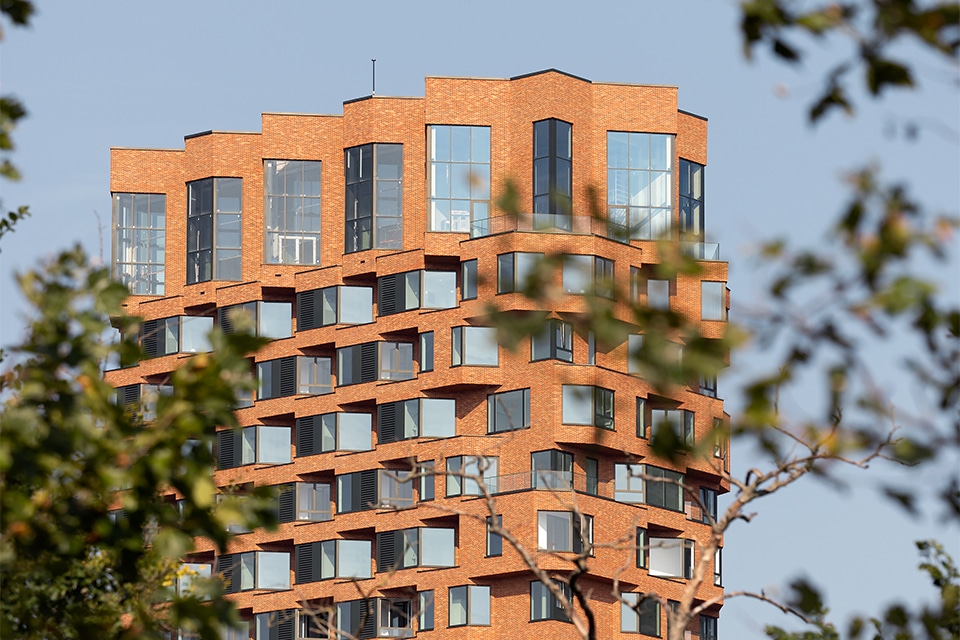
De Groene Loper Maastricht: 'Biodiversity has become an intrinsic part of this area'
When the widened President Roosevelt Avenue was completed in Maastricht in 1959, it was considered a model project for the Netherlands. With the arrival of the N2/A2, also known as the city bypass, it was thought that the flow of local north-south traffic had been taken care of. Nothing proved less true, however. In later decades, the four-lane road became the most important north-south connection in the Netherlands and the access road to Belgium and France. In 2009, about 45,000 cars per 24-hour period drove over the President Rooseveltlaan. Maastricht-East was heavily burdened by this traffic. The N2/A2 cut the neighborhood in half and local traffic and the livability of the surrounding neighborhoods were under great pressure. Something had to be done.
At the beginning of this century, the municipalities of Maastricht and Meerssen, the Province of Limburg and the Department of Public Works (Rijkswaterstaat) came up with an initial impetus to tunnel the A2 motorway in Maastricht while redeveloping the area around it. After financing and tendering were arranged, the De Groene Loper master plan for traffic infrastructure and urban development was launched in 2009. In this article, Green Cities Europe focuses on the elongated, green park on top of the two-layer King Willem-Alexander Tunnel. With Jos Geurts, area development manager of Projectbureau A2 Maastricht and involved in De Groene Loper since 2002, we look at what has happened since the master plan was launched in 2009.
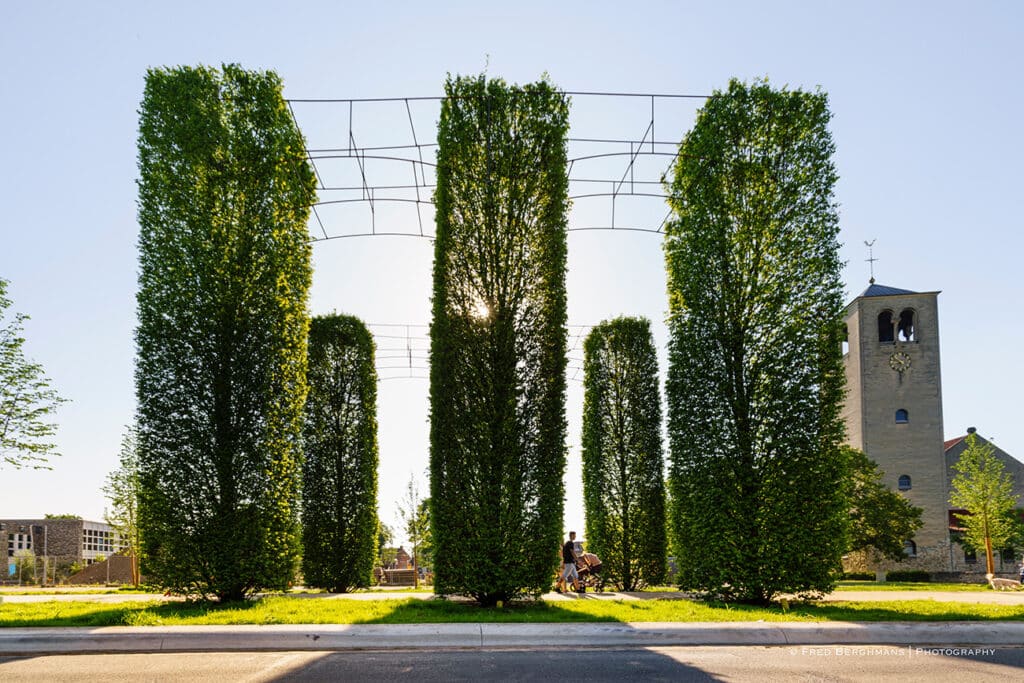
Meandering boardwalk
The design of the park comes from West8. An important theme here is the connection between the neighborhoods east and west of the A2, but also between the city and the estates zone north of Maastricht. The walkway extends over a length of 2.3 kilometers and is designed as a meandering promenade, varying in width from 45 to 120 meters. Four to eight rows contain linden trees, giving the park a monumental character. A six-meter-wide path for slow traffic runs through the park; pedestrians, cyclists and runners share this space.
Tree Plan
A special tree plan was created for the park. When choosing the trees, their growth location and root structure were taken into account. For example, it was important that the trees have 'wide' roots. The immediate environment was also considered in the choice of trees. The new trees had to fit in with the existing, prominent trees, so that unity of green would remain between the new area and the existing environment.
More than half of the trees consist of the aforementioned linden trees on either side of the six-meter-wide semi-paved center aisle. Also planted are tulip trees, winter and summer oaks, ornamental cherries, ash trees and other trees; altogether some 11 species. At two locations there are image-defining green "giant pillars"; 8 to 10 meter high hornbeams from a specialized grower from Germany. These trees were already 25 years old when planted. Various bird species such as dunnocks, wrens, robins and sparrows are attracted to the tall trees, which is why they are also called "bird flats.
Remote monitoring
The linden trees first spent five years at a nursery in Zwolle. After planting the mature trees in 2017, it was exciting how they would hold up, especially during the hot summer months. Says Geurts, "The deployment of moisture sensors ensured that only a handful of lime trees were killed." A sensor at each tree monitored soil moisture levels. The collected sensor data could be read remotely so that watering could be done in a timely manner if needed. "After four years, the trees were well established and the sensors were taken away," he said.
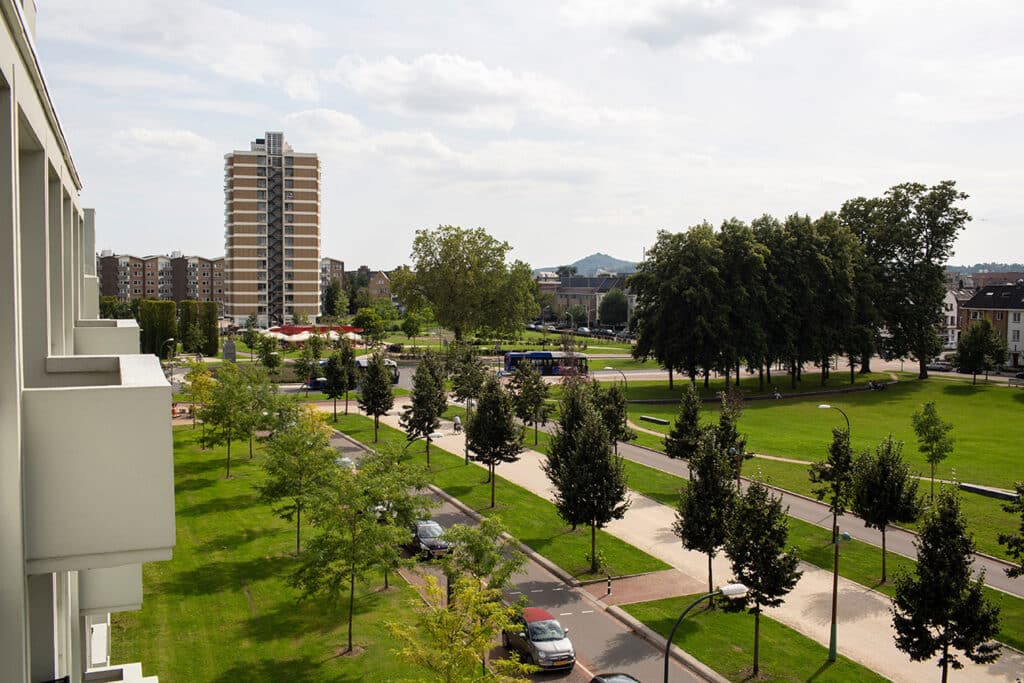
New insights, new initiatives
Right from the beginning of the A2 Maastricht project, efforts have also been made to create spatial and social opportunities for the surrounding neighborhoods. The Freedom Park on top of the tunnel plays a central role in this. This park, designed by West8, is now a well-visited meeting place. The project office supports and initiates initiatives that make staying on the Green Ribbon even more attractive, such as the construction of a park with play equipment and catering facilities. This is done using the 2015 My Healthy Green Loper action plan. Geurts has several more examples: "In addition to permanent ones, we also support temporary initiatives such as a large neighborhood garden on still undeveloped land, with large garden boxes that can be moved as needed. A greenhouse to grow plants and small-scale hospitality on the site are also in the planning."
Attention to biodiversity
There is also a focus on promoting biodiversity in the area. "At the time of the tender, this was not yet such an issue but quite soon after, we as a project office, together with the Municipality of Maastricht, Ballast Nedam and the Center for Nature and Environmental Education, drew up plans that should make the stay at the Groene Loper as attractive as possible for plants and animals as well," Geurts said. The approach is specifically aimed at helping the wild bee, an indispensable link in our food supply. To this end, spring bulbs have already been planted in the grass on the Green Ribbon. In addition, flower meadows have been sown with poppies, chamomile, wild chicory and snakeweed. The flower meadows together form a ribbon of bees, with bee hotels in between. Geurts is proud: "We have taken a giant ecological step. Where before thousands of cars a day raced by, there are now some 2,000 trees. Biodiversity has not become a veneer, but an intrinsic part of this area. It's an opportunity we have seized with both hands."
